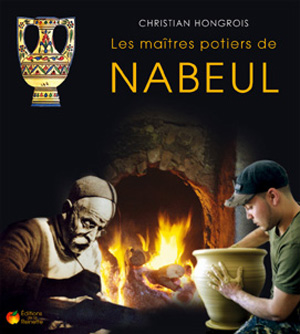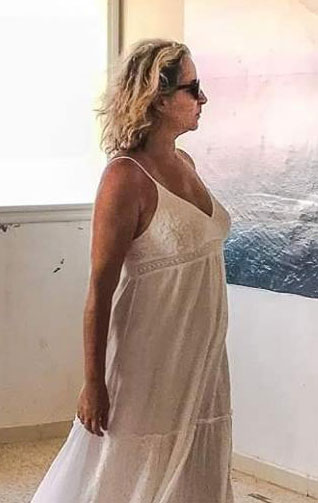
1001 Tunisie: How do you explain your passion for the jars and these potteries?
Christian Hongrois: It is a very old passion fed by three separate and complementary sources. From my childhood, I was bathed in pottery in Algeria, where my father, a schoolteacher, had created a ceramics workshop in the pilot school of Ain Taya near Algiers.
On the other hand, Tunisia, mother country, was the source of my dreams, when I was living in Algeria, mother and grandmother not ceasing their stories blooming lights of Tunisia and theBeja plains . Finally, my interest in ethnology, ethnography, naturally oriented my instinct, at the age of maturity, to find in the trinity of a contemplative force (earth-clay, mother earth and ethnographic field), any the power of passion.
Then it’s “chance”, but does it really exist? Mektoub would answer my jasmine moods and probably they were right. At forty I discovered these two huge jars Kallal El Kédime and therefore there was no morning without caressing with my sight the enamel of their sensual curves. As pilgrimage, I started looking to collect their stories and collect other jars, vases, plates, dishes and other pitchers of “Nabeul”. Fifteen years of passion, five hundred coin collection and this book which crowns the efforts and patience of my informants, descendants of French and Tunisian families of potters.
1001 Tunisie: You are a great pottery collector. Can you introduce your 500 pieces?
Yes, this collectible is a kind of gluttony where I draw the forces necessary for my future. My wife and I have collected more than five hundred pieces of Nabeul representing the history of ceramic art in this city from 1890 to today. So these are old pieces and some very recent for others, because the anthropologist is not a collector of the past, but a unifying memories, past, present, forging to this part of the identity of its object of study.
There is no naughty parts or wonderful treasures, there are pottery, multiple expressions of a story, of an economy or a season. there are gathered ceramics of Tissier, of Verclos, Abderrazak, Kedidi, Kharraz, Bensedrine, Mejdoub, Miled, Mashaal, Laajili, Hassiki, Ennaïm, Kerkenni, Gastli, Bouaouina, Bennia, Arfaoui, Khmaïes … and so many others, every son of Nabeul, master potters together by the force of their passion.
1001 Tunisie: How do you see the evolution of the ceramic of Nabeul?
A development that should, like jasmine, inspire a revolution to return to the essential aesthetic notions. Nabeul is a pool of talent, artists, and this is what must cultivate and publicize Nabeul to restore an image of quality. Production of “all-comers” to satisfy the mass tourism has its place, but must keep its rightful place and do not impose on the rest of the market mediocrity that characterizes it. We must re-educate tourists and it is the responsibility of industry players, club leaders and travel agents. Include guided tours of the potters quality institutions, recognize and value the industrial city of traditional pottery (history and technical source of the pottery industry) and not to convince travelers that the only interest of Nabeul is around the beaches or camel market …
Potters should no longer submit to merchant requirements and must regain the use of the identification of parts by signing their name in Arabic script. It is a value-added in the potter to be recognized, not only as a craftsman, but also as an artist. Finally, there is a genuine heritage culture to not let the abandonment or destruction of essential works. The Tissier façade disappeared, that of Kallaline is in very poor condition, the Abderrazak tiles of ancient pottery cooperative are very damaged by mistreatment and some frescoes of the old closure of the school of tourism reduced to rubble.
1001 Tunisie: Why this book on the master potters of Nabeul? What is its contribution to the history of Tunisian ceramics?
This book is twofold. On one hand it can be used as referential basis for Nabeul potters to unwind in the heart of the sets and forms of their fathers and masters. The few listed four hundred rooms, designed as once did the field ethnographers form a fabulous catalog, inexhaustible source of inspiration and renewal in their art and techniques.
On the other hand, this is the first book that traces as closely as possible the history of the ceramics, the potters, placing each in its proper place in the board of this human fresco. Frédéric Mitterrand, Minister of Culture, a great friend of Tunisia and citizen of Hammamet it is not deceived by prefacing the book and pointing to the book “the rigor and accuracy of an outstanding scientific work.”
Interview by TB
{} Mainvote


 َAbonnez-vous
َAbonnez-vous

